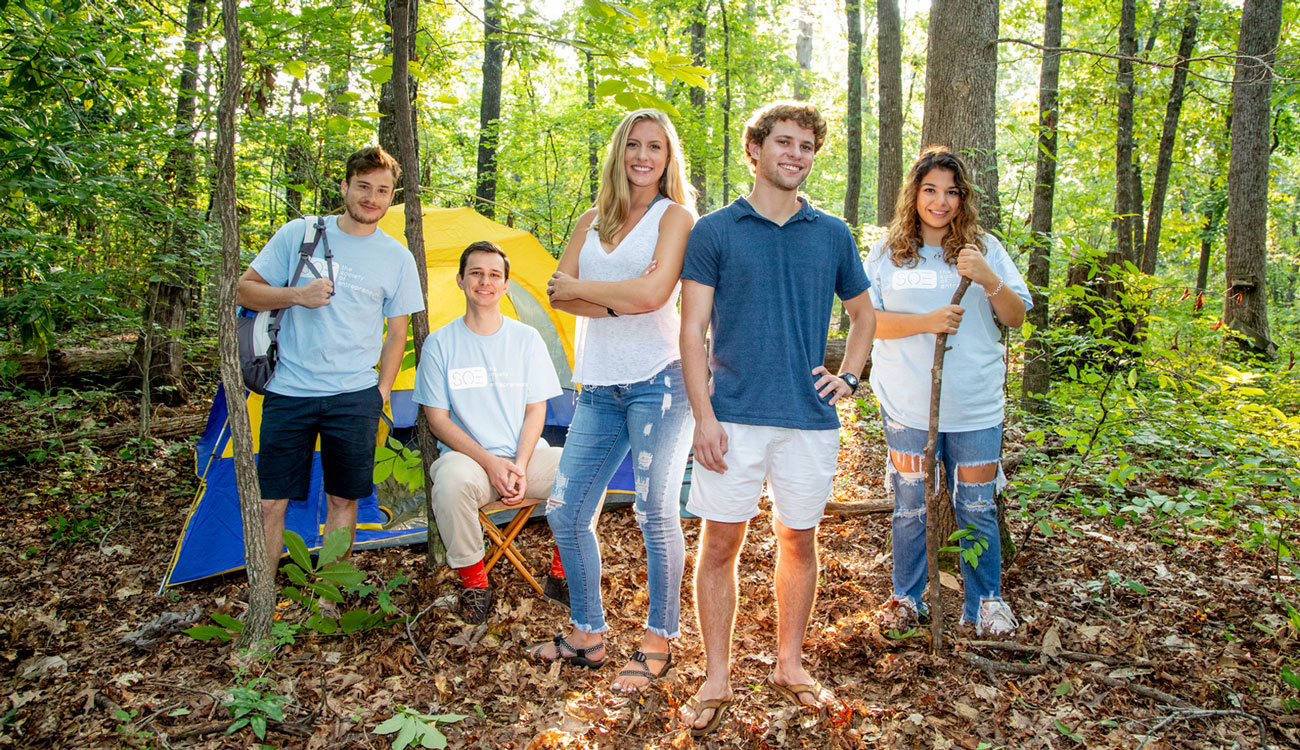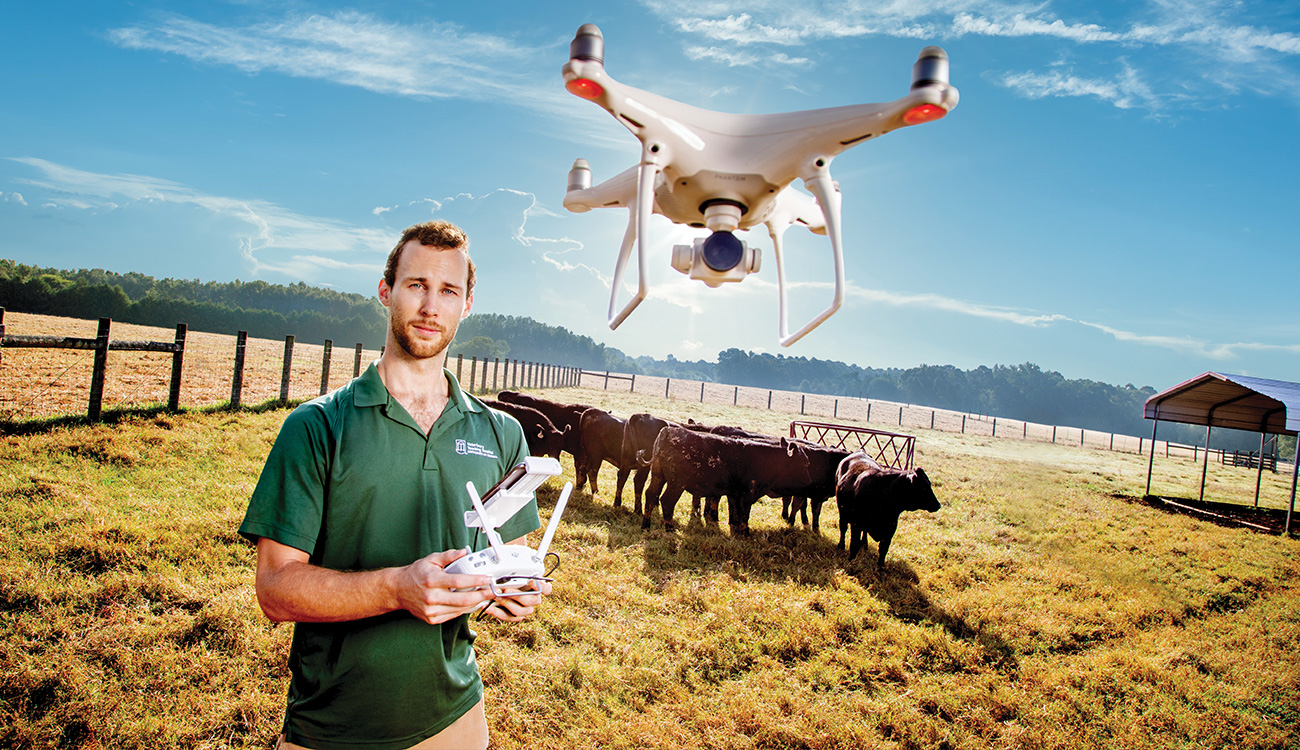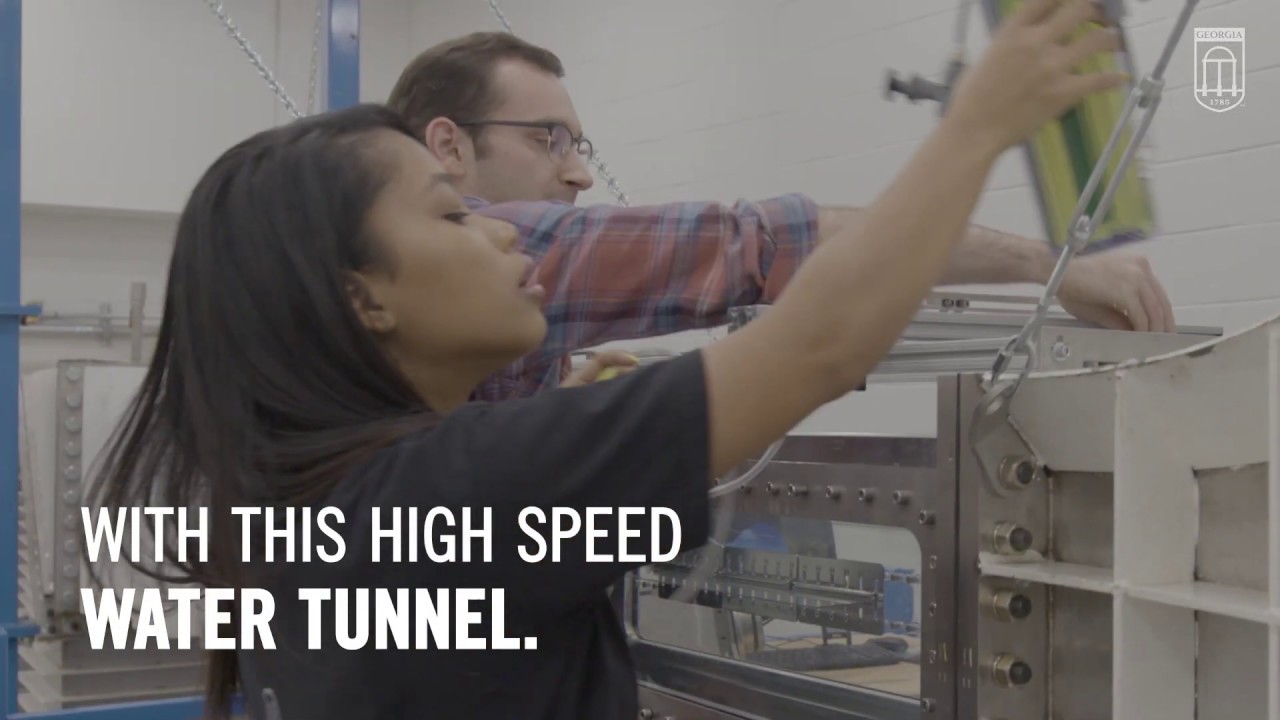In the early weeks of 2018, Meriah Grove was an innovator in search of an idea. The undergraduate advertising major from Atlanta had already launched her own nonprofit while still in high school, and now she was looking for new ways to channel her entrepreneurial passion.
Meanwhile, across campus, David Balinsky was about to complete his doctorate in veterinary medicine, but in his head lived the spark of an idea to employ aerial drones in the service of animal health. He just needed some help to develop and transform his idea into reality.
Both students found the pathways they needed, thanks to UGA’s I-Corps program.
I-Corps is the National Science Foundation’s seed funding program for commercial innovation. Launched in 2011 and brought to UGA via an NSF grant in 2017, the program offers education and financial support to help innovators with STEM-related ideas determine if those ideas have real commercial potential. UGA’s five-year, $500,000 grant allows it to provide up to 30 teams each year with both an introduction to the startup world and funding for critical, early-stage customer-discovery work.
Now entering its second year of operation, UGA’s I-Corps program adds another mechanism to the university’s well-stocked toolbox to help fledgling inventors and entrepreneurs move their dreams to market. From entrepreneurial education efforts in multiple UGA colleges, to the Office of Research’s successful Innovation Gateway program (which administers I-Corps), to more longstanding organizations such as the Small Business Development Center, there is a university-wide commitment to fostering a vibrant culture of innovation at UGA.
“Our goal is simply to help UGA faculty and students move their ideas to market, in whatever form that may take,” says Derek Eberhart, director of Innovation Gateway. “It’s right there in our name—we are a gateway, and there are many different ways you can walk through that door.”

Tents, Drones & Pretty Babies
Innovation is hot these days. In the 10 years from 2005 to 2015, the number of utility patents (i.e., inventions) awarded by the U.S. Patent & Trademark Office more than doubled, from just under 144,000 in 2005 to more than 298,000 in 2015. What this means for a 21st-century research university is a lot of faculty and students who bring big ideas to campus.
“We’ve always had a lot of innovative ideas,” says Ian Biggs, Innovation Gateway’s senior associate director for startups. “But not all ideas are good, and that’s a tough message to give someone. It’s like telling people they have an ugly baby. Now, with I-Corps, we’ve got a program we can use to show people what they need to do to have a pretty baby.”
I-Corps leverages the “Lean Startup” curriculum to teach its participants the ropes of business development, and Biggs says one of the hardest lessons to learn is that a great scientific idea does not necessarily translate to a great consumer product or service. But the idea may still have potential.
Take Grove and her team. They started with an existing UGA patent for a type of indestructible golf tee. After spending time on golf courses talking to players, the team realized that most golfers happily go through tees like baseball players munch sunflower seeds, and there simply wasn’t much of a market for permanent tees.
“We did a lot of brainstorming about how else we could use this technology,” she says, “and eventually we came up with the idea of tent stakes.”
Campers, and especially backpackers, can certainly use a lightweight, highly durable tent stake. Grove’s team discovered that outdoor equipment is a multibillion-dollar industry, and the idea for Kenite tent stakes was born. Now they are fine-tuning the material to be used in making the stakes and already have a manufacturer on board, ready to start production.
Balinsky’s route to I-Corps fit more with the “inventor” narrative: In spring 2018 he took his drone idea to a College of Veterinary Medicine hackathon and was matched up with a team that included three undergraduate computer science majors. His team didn’t win, but Balinsky’s idea for “Shepherd Drones”—unmanned aerial vehicles that hover over a herd of cows and use infrared cameras to detect those with elevated skin temperatures, indicating possible disease—earned him a spot in last spring’s I-Corps cohort.
Surprisingly, Balinsky says, little research exists on whether bovine skin and core temperatures differ significantly in sick animals. In addition to customer discovery, Balinsky has been working with Assistant Professor Brent Credille in veterinary medicine to begin answering this question and thus help validate the Shepherd Drone proof of concept.
“Innovations in technology have tons of potential to improve both the welfare of animals and the profitability of farms,” Balinsky says. “I’ve been traveling around the country, sitting down with producers, researchers and veterinarians. We have identified a need in the market and a potential solution.”
One Gateway, Many Pathways
For every Kenite tent stake or Shepherd Drone that pops up on UGA’s innovation radar, there are many more ideas that aren’t as well-developed, don’t have a clear and committed champion, or simply aren’t destined to be a branded “product.” That’s where the university’s repertoire of entrepreneurial tools comes in.
A big part of Innovation Gateway’s mission—on the faculty side, especially—is helping people to understand they can still commercialize their research without diving headfirst into the shark tank.
I-Corps is yet another tool for UGA’s Innovation Gateway, whose mission is to commercialize the university’s research and new technologies. Associate Vice President for Research Derek Eberhart (far left) leads Innovation Gateway, with help from (left to right) Kevin Wu, I-Corps director Ian Biggs, Jared Bybee, Heather Pierce and the rest of his team.
“We help people answer, ‘Is this worth my time?’” Biggs says. “We help them understand what’s wanted in the business world. It’s not about ‘debasing’ research by making it about money; it’s about taking ideas and making them available for the rest of the world. It doesn’t mean that faculty members will have to abandon half of their research to pursue these things.”
Often what companies want are creative steps forward in specific areas, since many firms can’t afford to divert significant resources to research and development. This sets up a synergistic dynamic with universities, where serious R&D goes on every day in labs devoted to every scientific sub-specialty one could imagine.
Professor Jason Locklin, jointly appointed in chemistry and engineering and director of UGA’s New Materials Institute, has worked repeatedly with Innovation Gateway to supply new technologies from his polymer research lab for others to develop.
“My strengths are in developing new technologies, not scaling up, marketing or other things that are associated with developing a startup company,” Locklin says. “That’s not my primary passion. But I’m happy to hand off our initial, patented discoveries to someone else who will move the technology to market. If someone can take those ideas and turn them into a commercial success, I’m happy to help.”
That’s one of Innovation Gateway’s core missions. Its “sweet spot” is the middle stages between small-scale prototyping and large-scale commercial feasibility testing, and it leverages a range of educational and funding options to help innovators move progressively through those stages.
One such resource for product prototyping is the New Materials Innovation Center, launched in 2016 with $500,000 from the Department of Commerce’s Economic Development Association. Two more are Small Business Innovation Research grants (offered through the U.S. Small Business Administration) and Georgia Research Alliance (GRA) Ventures grants, as well as others.
Innovation Gateway is also a conduit for industry. This not only means matching up interested companies with specific UGA technologies, but also fostering more creative partnerships. For example, the hackathon that helped put Balinsky on his road to entrepreneurship was sponsored by Boehringer Ingelheim, one of the largest animal health companies in the world, in an arrangement brokered through Innovation Gateway.
The results speak for themselves: Nearly 700 products derived from UGA inventions have made it to market, with 52 of those coming in fiscal year 2017 alone. For a decade, UGA has ranked in the Top 10 of all U.S. universities for licensing deals, and for four years it’s been among the Top 5 for moving products to the marketplace. The Innovation Gateway startup “pipeline”—companies and projects in active development—now numbers about 130 projects (up from only 40 in 2015), and on the licensing side Innovation Gateway executes more than 150 options and licenses every year.
While the odds may be daunting, there is certainly the chance for success, even spectacular success. More than a decade ago, Robert Ivarie of the Department of Genetics worked with UGA’s Technology Commercialization Office (the precursor to Innovation Gateway) to found a startup called Avigenics, which subsequently acquired GRA funding, recruited staff and a management team, and transformed into Synageva. In June 2015, after graduating from the Innovation Gateway incubator, Synageva was acquired by Alexion Pharmaceuticals for more than $8 billion. Ivarie now holds the title of professor emeritus.
“There is so much creative, innovative potential among our researchers and students at UGA. Innovation Gateway’s job is to help channel this energy in productive directions and hopefully contribute to economic development locally, regionally and even nationally,” says Vice President for Research David Lee. “There are big ideas all over this university. We want to develop those ideas and put them to work.”
The University of Innovation
Many of the big ideas come from students, and those with entrepreneurial ambition like Grove and Balinsky can find support across the UGA campus. Prior to the establishment of the university-wide Entrepreneurship Certificate Program in 2016, both the Terry College of Business and the College of Family and Consumer Sciences (FACS) offered certificates in entrepreneurship. Today students from FACS, Terry and every other UGA college have the opportunity to come together and study entrepreneurship under one umbrella.
In addition to operating the UGA Idea Accelerator and Summer Launch Program, the UGA Entrepreneurship Program works with colleges and schools to hold “Shark Tank”-style startup competitions including FABricate (with an emphasis on food and agribusiness), Next Great Consumer Brands (consumer products) and Next Top Entrepreneur (technology, ag and consumer). Each is a national competition in which student teams from across the country come to UGA to compete for top honors. And the College of Engineering’s senior capstone program provides its own steady supply of inventions and ideas with potential for commercial success.

“What makes UGA a great place for entrepreneurship is that ideas come from all corners of the university,” says Bob Pinckney, director of the Entrepreneurship Program. “You’ve got support for entrepreneurship at the highest levels of UGA leadership, which has been key. Innovation Gateway is providing support for researchers—faculty and grad students—that are commercializing some of the amazing research coming out of UGA, while the Entrepreneurship Program focuses on students who may or may not be utilizing university research. The programs complement each other very well.”
Pinckney says the entrepreneurship certificate program has exploded from just 33 students in 2016 to 420 students in spring 2018. Based on that level of engagement, he worked with University Housing and the Office of Instruction to create The Launch Pad, a residential space in Creswell Hall that caters to entrepreneurially minded students.
Opened in fall 2018, the space is home to 26 first-year students, all of whom are enrolled in the certificate program. Launch Pad residents are connected with the broader innovation community both on campus and around Athens, and the space itself features 3D printers and other amenities to support development of their ideas. UGA Society of Entrepreneurs student members like Grove will serve as mentors to Launch Pad residents.
By the time these students are seniors, the entrepreneurial community at UGA will be even more vibrant. In January 2018, President Jere W. Morehead appointed a task force to investigate the prospect of creating an “innovation district” that would connect faculty, students and industry in a common space devoted to innovation and entrepreneurship. The task force’s official report strongly backed the creation of such a district.
“What we found through the task force, as we went out and looked at other schools, is that we have a lot of the same programs they do, and an innovation district can be the focal point for the many facets of UGA’s innovation ecosystem,” says Eberhart, who served on the group. “There’s real support from the university to push this to the next level.”
“We believe an innovation district will facilitate the interdisciplinary collaboration that is so often at the heart of entrepreneurial success stories,” says Morehead. “This effort has the chance to be transformative for UGA and will be a significant driver of economic development in our state. I’m excited to watch its impact take shape.”






